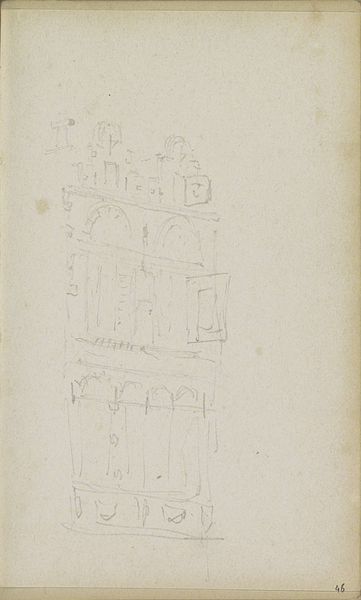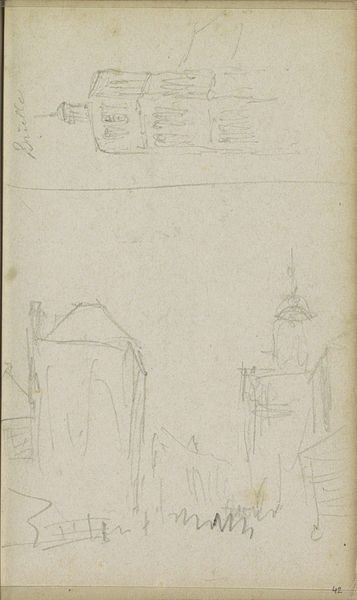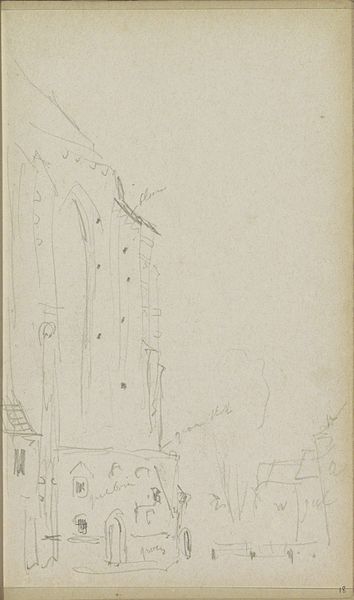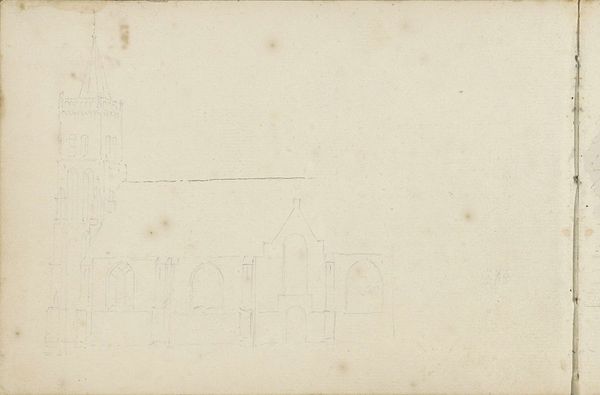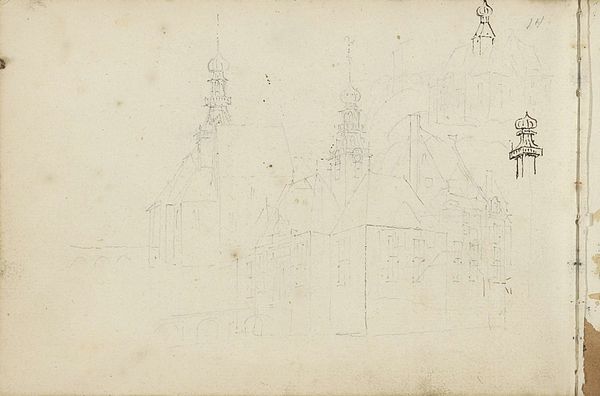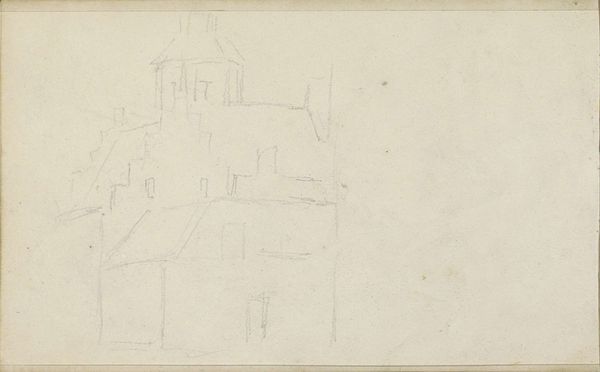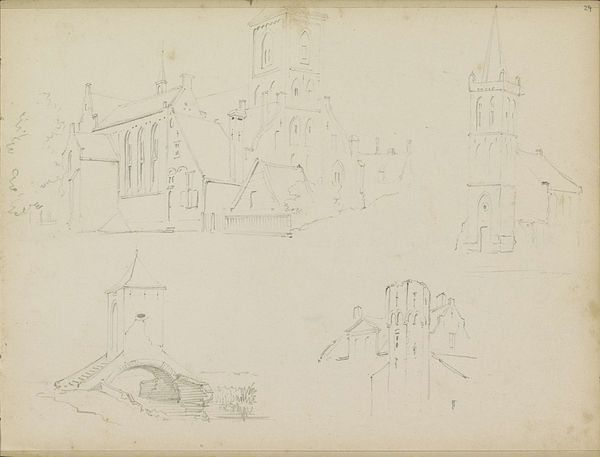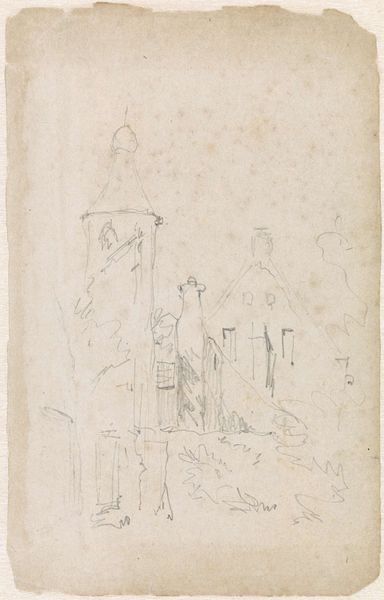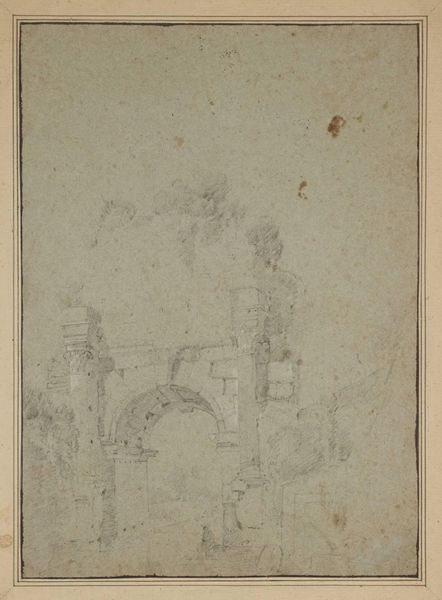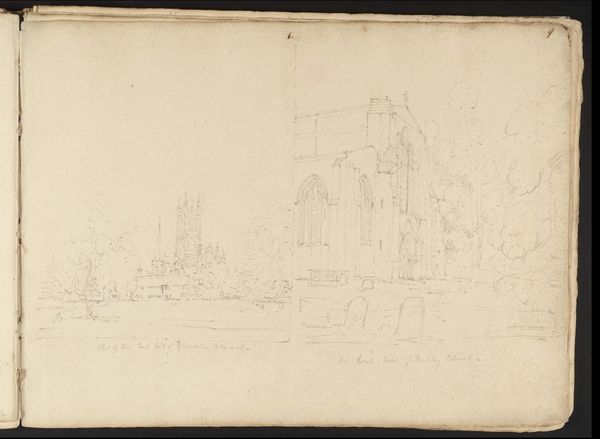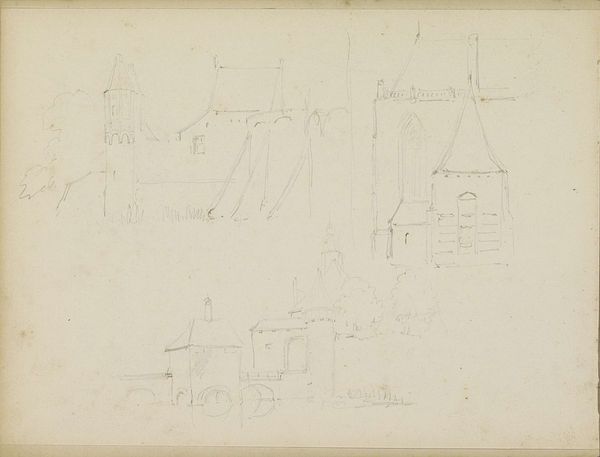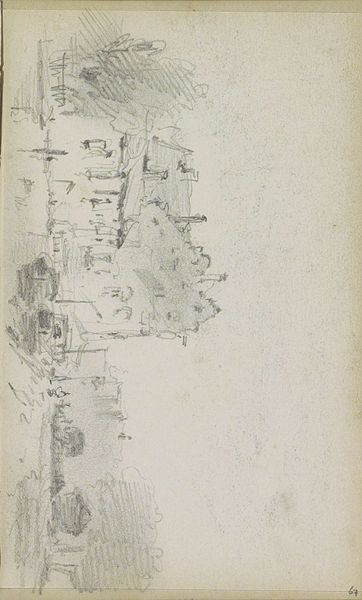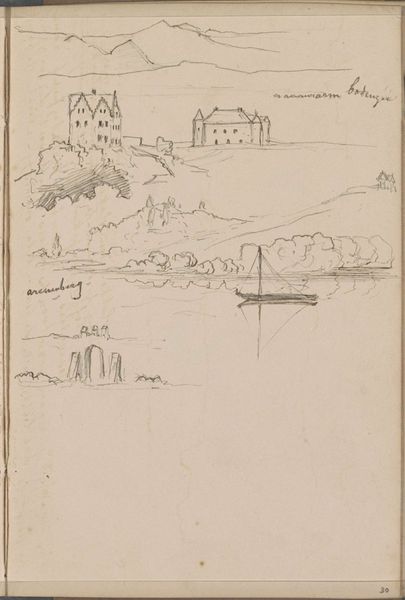
#
amateur sketch
#
toned paper
#
light pencil work
#
quirky sketch
#
incomplete sketchy
#
personal sketchbook
#
ink drawing experimentation
#
pen-ink sketch
#
sketchbook drawing
#
sketchbook art
#
street
Dimensions: height 161 mm, width 98 mm
Copyright: Rijks Museum: Open Domain
Editor: This sketch, titled "Gezicht op een straat met een kerk" by Adrianus Eversen, dated circa 1828-1897, is incredibly subtle. It’s almost ghostly in its lightness. What strikes me most is how fragile it appears. As an Historian, how do you read into such a personal piece? Curator: Indeed. I find it quite compelling precisely because of its fragility and incompleteness. Consider the era – a period of immense social and technological change. Sketches like this, often private, provide a crucial counterpoint to the grand, official artworks sanctioned by the established art institutions. They can reveal the evolving perspectives and visual experimentation of an artist, that can otherwise be unseen to the wider public. Editor: So you see this as almost a rebellion against the artistic norms of the time? Curator: Perhaps not a direct rebellion, but definitely an exploration outside the confines of public expectations. Eversen might be engaging with the street—what does that say about a time where the Church holds significant cultural authority. Can you imagine, how would it look if the piece displayed the other way around? Editor: I see what you mean. Viewing it that way, the Church would recede in importance. I wonder if Eversen ever meant for anyone else to see it. Curator: Exactly. And that very question – its intended audience, its place within the artist’s personal archive – speaks volumes about the changing function of art in society. Is this church the central feature in society, or the quick sketch to someone walking by in a quick passing? Editor: This has completely changed how I see sketches. It's like glimpsing a private conversation, giving a genuine, rare, personal perspective on a time period. Curator: Precisely. That shift from public spectacle to intimate engagement is central to understanding the cultural significance of works like this, and understanding where art stands in our culture and the development of it.
Comments
No comments
Be the first to comment and join the conversation on the ultimate creative platform.
